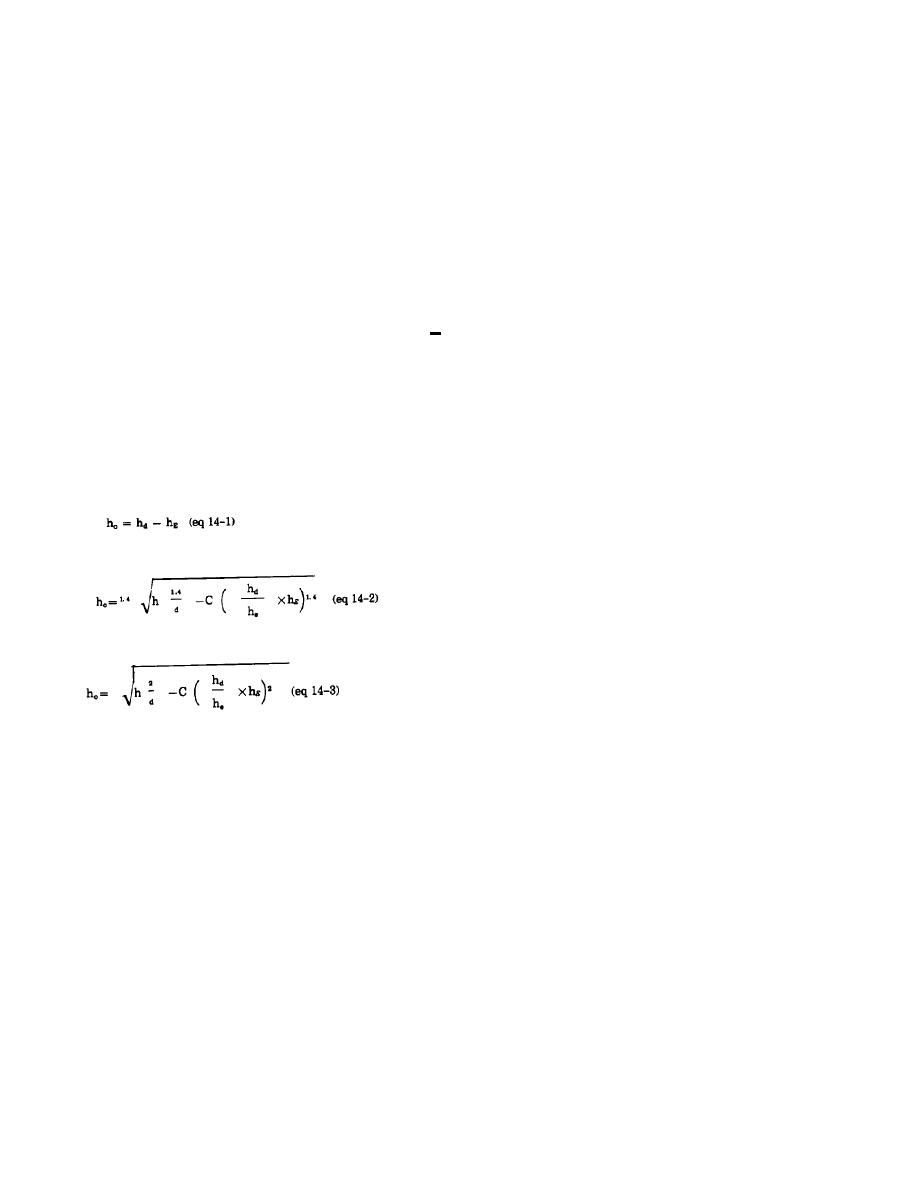
TM 5-822-5/AFM 88-7, Chap. 1
degree of bond that develops between the overlay
design thickness he. The minimum thickness of plain
and existing pavement: fully bonded, partially
concrete overlay will be 2 inches for a fully bonded
bonded, and nonbonded. The fully bonded overlay
overlay and 6 inches for a partially bonded or
equation is used when special care is taken to pro-
nonbonded overlay. The required thickness of
vide bond between the overlay and the existing
overlay must be rounded to the nearest full or -
pavement. The partially bonded equation will be
inch increment. When the indicated thickness falls
used when the rigid overlay is to be placed directly
midway between 1 and -inch, the thickness will be
on the existing pavement and no special care is
rounded up. See paragraph 14-11 for overlay design
taken to provide bond. A bond-breaking medium
example.
(2) Jointing. For all partially bonded and
and the nonbonded equation will be used when a
plain concrete overlay is used to overlay an existing
fully bonded plain concrete overlays, joints will be
reinforced concrete pavement or an existing plain
pro- vided in the overlay to coincide with all joints
in the existing rigid pavement. It is not necessary for
concrete pavement that has a condition factor C <
0.35. They will also be used when matching joints
joints in the overlay to be of the same type as joints
in a plain concrete overlay with those in the existing
in the existing pavement. When it is impractical to
plain concrete pavement causes undue construction
match the joints in the overlay to joints in the
difficulties or results in odd-shaped slabs.
existing rigid pavement, either a bond-breaking
b. Plain concrete overlay.
medium will be used and the overlay designed as a
(1) Thickness determination. The required
nonbonded overlay or the overlay will be reinforced
thickness ho of plain concrete overlay will be de-
over the mismatched joints. Should the mismatch of
termined from the following applicable equations:
joints become severe, a reinforced concrete overlay
design should be considered as an economic
Fully bonded
alternative to the use of a nonbonded plain concrete
overlay. For nonbonded plain concrete overlays, the
design and spacing of transverse contraction joints
Partially bonded
will be in accordance with requirements for plain
concrete pavements. For both partially bonded and
nonbonded plain concrete overlays, the longitudinal
construction joints will be doweled using the dowel
size and spacing discussed in chapter 15. Dowels
Nonbonded
and load-transfer devices will not be used in fully
bonded overlays. Joint sealing for plain concrete
overlays will conform to the requirements for plain
concrete pavements.
c. Reinforced concrete overlay. A reinforced
where hd is the design thicknesses of plain concrete
pavement determined from figures 12-1 or 12-2
concrete overlay may be used to strengthen either
using the design flexural strength of the overlay and
an existing plain concrete or reinforced concrete
he is the design thickness of plain concrete
pavement. Generally, the overlay will be designed as
pavement using the measured flexural strength of
a partially bonded overlay. The nonbonded overlay
the existing rigid pavement; the modulus of soil re-
design will be used only when a leveling course is
action k of the existing rigid pavement foundation;
required over the existing pavement. The rein-
and the design index needed for overlay design. The
forcement steel for reinforced concrete overlays will
use of fully bonded overlay is limited to existing
be designed and placed in accordance with re-
pavements having a condition index of 1.0 and to
inforced concrete pavements.
(1) Thickness determination. The required
overlay thickness of 2.0 to 5.0 inches. The fully
bonded overlay is used primarily to correct a sur-
thickness of reinforced concrete overlay will be de-
face problem such as scaling rather than as a
termined using figure 13-2 after the thickness of
structural upgrade. The factor hE represents the
plain concrete overlay has been determined from the
thickness of the existing plain concrete pavement or
appropriate overlay equation. Then, using the value
the equivalent thickness of plain concrete pavement
for the thickness of plain concrete overlay, either
having the same load-carrying capacity as the
the thickness of reinforced concrete overlay can be
existing pavement. If the existing pavement is
selected and the required percent steel determined
reinforced concrete, hE is determined from figure
or the percent steel can be selected and the
18-2 using the percent reinforcing steel S and
thickness of reinforced concrete overlay determined
14-3



 Previous Page
Previous Page
